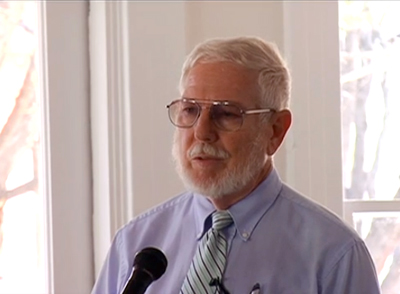
By Michael A. Duniho
Mickey Duniho is a former master programmer for the NSA for over 30 years. He specializes in systems security and computer science. Duniho served as a member Pima County Election Integrity Commission for six years until 2014. Before the formation of the commission, he was the author of the Arizona Democratic Party Election Integrity Manual in 2007. His expert witness testimony was key to the successful lawsuit against Santa Cruz County Elections and against the Pima County Elections Department suit that yielded the largest amount of elections data in U.S. history. In Maryland, he served as the Chief Election Judge in Laurel, Maryland for 11 years.
This analysis looked at the top two candidates in the Democratic Presidential Preference Election (PPE) and the top two candidates in the Republican PPE. In each election, I calculated each candidate’s percent of the total early vote and precinct vote, then calculated the difference between the top two candidates’ early vote and precinct vote, then calculated the difference between the early difference and the precinct difference. This final number shows how a candidate’s performance shifted between the early and precinct vote, relative to his/her opponent. In a random distribution of votes, we would expect a randomly distributed shift of votes among the various precincts due to demographic variation and small-number statistics. Because of the aggregation of precinct differences, the county-wide count should have only a small early-precinct difference: almost certainly no more than 5-10% overall.
In the Democratic Primary, Sanders won Pima County precinct vote count by 14 percent, while Clinton won the early vote count by 20 percent, resulting in a spread between the two counts of 34 percent. This was an extraordinary difference between Early and Precinct votes for Clinton and Sanders. In every precinct but one, Clinton’s early ballot numbers relative to Sanders exceeded her precinct ballot numbers relative to Sanders. Her average early-precinct difference varied from 30% in CD1 to 38% in CD3. Out of the 124 precincts with Democratic votes, there were 123 precincts in which early ballot counts favored Clinton. The one exception was a small precinct in which Clinton won both the early and precinct vote counts but won the precinct vote count by a slightly larger percentage than the early vote count. Except for that precinct, the smallest difference favoring Clinton was 10%.
I have seen early-precinct discrepancies in other elections favoring one candidate or another by as much as 20% but in all my years of election analysis I have never seen a difference of 30%, or an election in which every precinct had an early ballot count favoring one candidate over the precinct count.
In the Pima County ballot count for the 2016 Republican Presidential Preference Primary, the early-precinct differences among the individual precincts favored both Cruz and Trump, with 39 precincts favoring Cruz and 95 precincts favoring Trump. Overall, Pima County early ballot counts favored Trump by 8 percent. The evidence of vote-shifting is less compelling than in the Democratic election. The Republican numbers look more like randomly distributed numbers and less like manipulated vote counts. The smallest differences in individual precincts were less than 1 percent, and the largest differences favored both candidates.
These numbers strongly suggest a computer-manipulated vote count favoring Clinton in Pima County. Early vote counts are easily manipulated and the manipulation is impossible to expose, because Arizona does not require a valid hand-count audit of early ballots and Pima County has repeatedly refused over the last ten years to allow such a level of transparency. Given that randomly selected precinct vote counts are audited using hand counts, the probably-honest precinct vote count favoring Sanders by 14% suggests that he should have won Pima County by at least 4 percent, and that someone in the Pima County Election Department changed the early ballot numbers in the computer to shift the win to Clinton. Her officially reported percent for Pima County was 56 percent, 12 percent more than Sanders.
end


